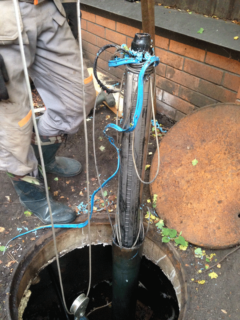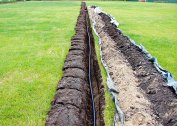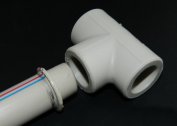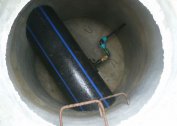Using pumping units produce water from the well. Everyone who has come across such a device knows that sooner or later there is a need to get it from the depths. There may be several reasons for this decision:
- Broken cable or hose (often the culprit is the man. Many save on high-quality consumables or start dragging sharply when trying to remove the pump).
- Immersion in sludge or sand (occurs due to sparse cleaning of the well, as well as soil characteristics. The sludge partially or completely covers the pump casing, which makes it impossible to lift the unit up).
- Jam at depth (occurs when the casing is damaged as a result of inaccurate human actions to clean the well or due to the fall of a foreign object).
- Sagging or winding of the electric cable (appears as a result of a different degree of tension with a cable that fixes the position of the pump in the pipe - a loop is formed that seizes the device).
If there is already a problem with getting the pump out of the well, you should study in detail how to do it correctly so as not to aggravate the situation.
Effective ways to extract a pump from a well
 There are several options for removing a submersible pump. Let's analyze the most effective:
There are several options for removing a submersible pump. Let's analyze the most effective:
1. When the cable breaks, you should find a rod (necessarily made of durable metal). Its length should reach the bottom. A screw nozzle is attached to one edge (it resembles a corkscrew in appearance). On the second side of the rod, a rod is equipped to rotate this structure. The finished product should be lowered into the pipe and the jammed equipment should be found. You will have to make a lot of effort, because you should screw the nozzle into the pump housing. As soon as it deepened by at least 50% of its length, they begin to smoothly lift the equipment.
2. If the cause of a stuck pump when climbing upward was the sagging of the power cable, the following instruction will help to eliminate such a malfunction:
- It is necessary to slowly lower the device to the bottom of the well so that the cable, flexible hose and cable are equally tensioned.
- After that, you should simultaneously pull three “ropes” connected to the pump until they are on the same length.
To avoid such situations, you will need to fasten the cable, cable and hose at an equal distance using plastic clamps.
3. In the case when water is rarely used, silting of the pipe or the pump itself may occur. This situation makes you aware of a stuck installation. To get the pump you need to dilute the sludge with water. To do this, it is pumped into the well under high pressure. For such manipulations, you can not do without additional equipment with an additional source of water. The tube or hose goes down to the bottom, turn on the water supply and fill its well. At the same time, the cable should be tightened so that tension develops in the soil lock. Usually it takes just a few minutes to lift equipment using this technology.
 4. If a foreign object gets deeper into the well, the pump will become jammed. In general, this is one of the few problems that it is hardly possible to cope independently. The maximum that can be done: with the help of translational movements up and down, slightly shake the installation itself and move it from its place. If you try to pull the pump up with an effort, it may just fall into the shaft. In the case when a characteristic knock or shuffling is heard when lifting the device, there is an option to pull it out together with a foreign object.If the unit is stuck even more when passing a couple of meters, you should call a specialist or leave the pump inside the well and forget about it.
4. If a foreign object gets deeper into the well, the pump will become jammed. In general, this is one of the few problems that it is hardly possible to cope independently. The maximum that can be done: with the help of translational movements up and down, slightly shake the installation itself and move it from its place. If you try to pull the pump up with an effort, it may just fall into the shaft. In the case when a characteristic knock or shuffling is heard when lifting the device, there is an option to pull it out together with a foreign object.If the unit is stuck even more when passing a couple of meters, you should call a specialist or leave the pump inside the well and forget about it.
5. Jamming of the pump due to mechanical damage to the casing is possible under the following conditions:
- there is a roughness of the welds;
- dent;
- offset welded parts or flattened edge of the pipe itself.
If the pipe is damaged, a thud appears, and the unit itself wedges tightly. In such a situation, a slight change in the position of the pump will help. It should be rotated slowly, holding the cable, slowly lifting it out. Then a change of position is made. It is important that the device bends only a couple of millimeters. You do not need to exert excessive efforts when trying to push the pump through a difficult area, otherwise it threatens to completely jam inside the well.
6. Partial or complete immersion of the pump in sand or limestone. To remove the pump, water must enter between the soil and the wall of the pump. Here the following option is suitable: you need to slowly pull up the cable (not jerky!), Alternating its tension and weakening. This process usually takes a lot of time, but as a result the pumping station is outside. It is important to remove residual plaque in the device after lifting it. To do this, you need a container in which the pump itself is easily placed, as well as warm water and vinegar or citric acid. Usually 1 bottle of 9% vinegar or 250 g of citric acid is sufficient for 5 liters of water. We mix the ingredients and lower the unit into the container for 20-30 minutes. This will help remove lime and salt deposits, as well as small particles of debris.
7. Change of position of the pump in the well. Such a nuisance happens when the diameter of the pipe is much larger than the diameter of the device itself. To get the unit you need to loosen it slightly from side to side. Movements must be neat and gradual. As soon as the voltage in the cable has weakened, boldly pull the pump up. In the future, you will either need to change the pipe in the well, or the device itself for supplying water. After all, a similar problem can occur constantly.
Conclusion
Jamming a pump in a well is a common problem and there are many ways to solve it. If attempts to independently remove the device to the surface were unsuccessful, it is worth calling specialists.


